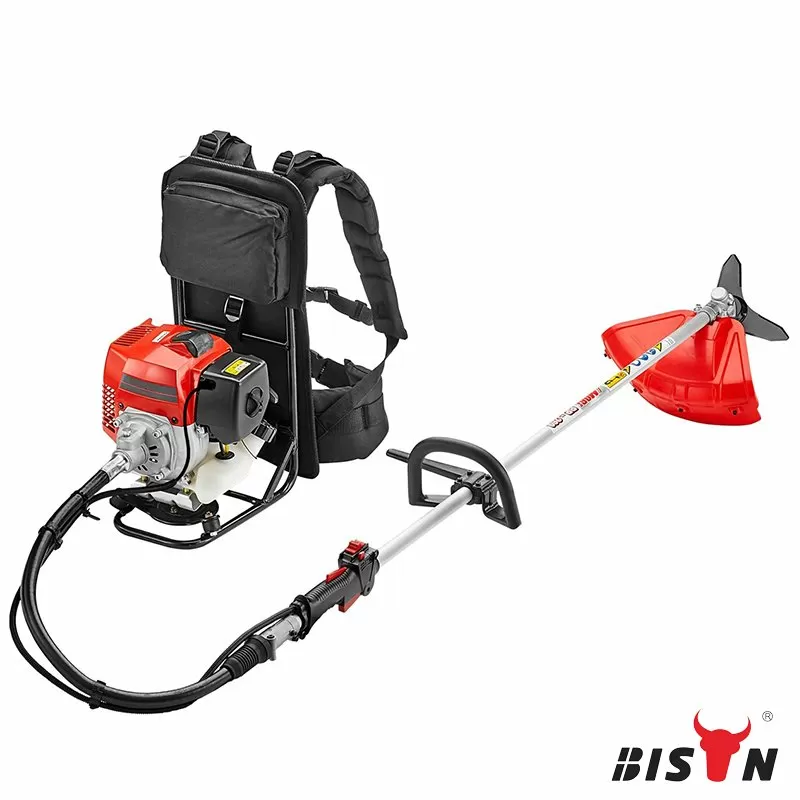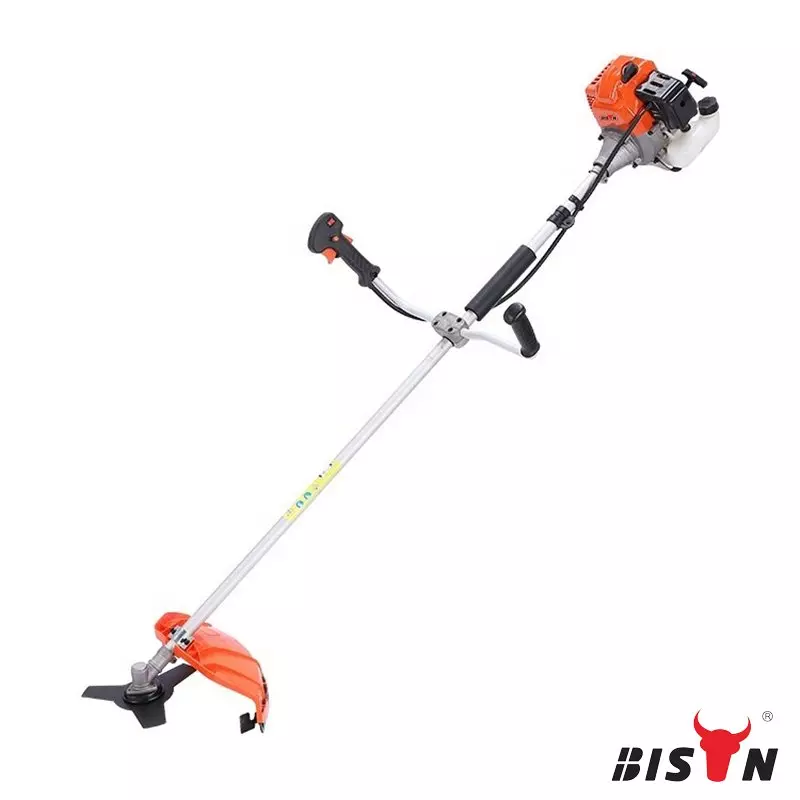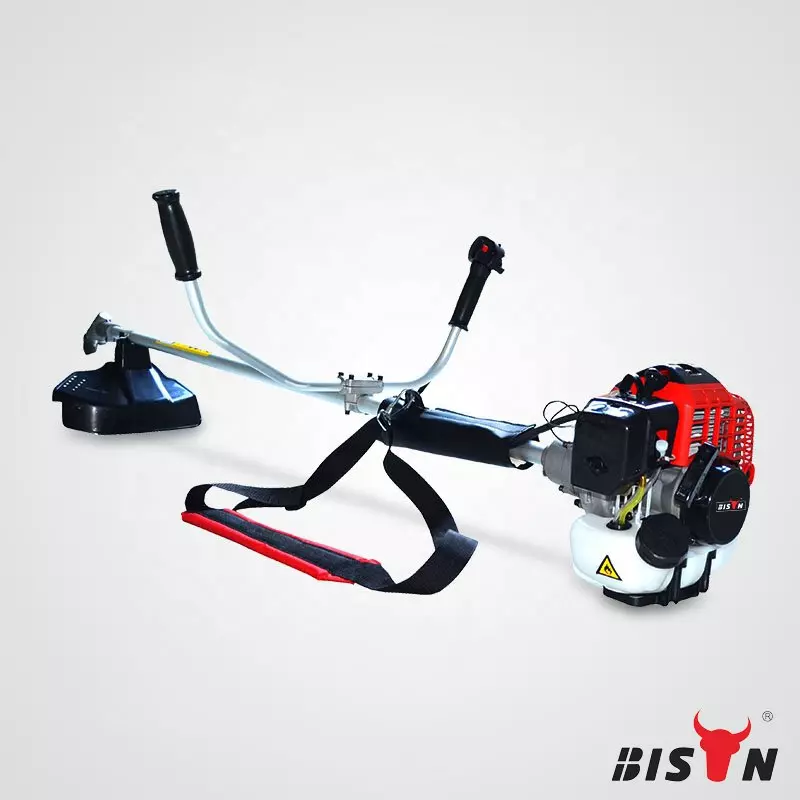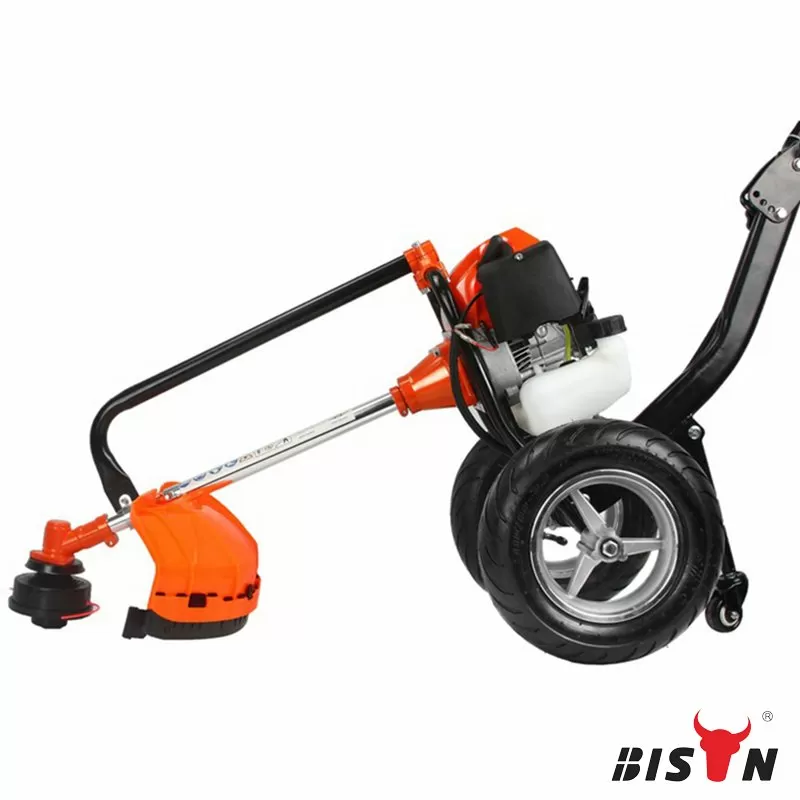How to use brush cutter safely and effectively
2023-10-24
Table of content
Lawnmowers are great for maintaining lawns but aren’t designed to mow every space. However, brush cutter is a versatile lawn care tool. Handheld brush cutters don’t just trim the edges of your yard like string trimmers; they can also be equipped with blades instead of lines to destroy thicker growth:
tall prairie grass
reeds and ferns
Brushes and shrubs
Saplings and small trees
Because handheld brush cutters can cut larger, more lush vegetation, using them requires more care and some tips and precautions than you’ll have to remember when using a regular lawn mower. In this comprehensive guide, BISON will delve deep into the world of brush cutters, offering insightful tips and practical advice on how to use brush cutter safely and effectively. Whether you're a seasoned professional or a novice just starting, this article will equip you with the knowledge you need to know.

Safety precautions:
Always read the product manual and follow safety training standards before use. Brush cutters can be dangerous if used improperly. It is important to take the following safety precautions when using a brush cutter:
Always wear safety gear. OSHA requires the use of the following safety equipment: hard hat, hearing protection, eye protection (a mesh face shield is acceptable, but provides more protection when paired with safety glasses), padded gloves (for protection and shock absorption). Additionally, many workplaces and professional organizations require anyone using brushcutter to wear long trousers. The lower legs and shins are well within the range of the brushcutter’s wire and blades and should be protected as much as possible.
Check the work environment for any hazards. Keep a safe distance (50 feet or more) from other people. Be careful not to hit any obstacles, such as rocks, trees, or fences.
Use the brush cutter in a well-ventilated area to avoid inhaling exhaust fumes.
Take breaks often to avoid fatigue.
Shut off the engine entirely and allow it to cool before refueling.
Make sure the accessories are installed correctly and securely.
Adjust the harness and handles to fit your height.
Always keep both hands on the control handle. Do not operate with one hand. A strong grip will ensure you have control over the tool and help prevent any unexpected movements.
Do not raise the cutter head above knee height.
While using your brush cutter, it's essential to maintain your balance. Avoid overextending yourself or reaching too far, as this could lead to falls or injuries.

How to start a brush cutter?
Before anything else, ensure you thoroughly understand the manufacturer's instructions on how to start your brush cutter. Start the machine on level terrain and check if the cutting attachment is in contact with anything.
If you use a gas-powered brush cutter, move at least 10 feet away from a fuel source and start the machine in a well-ventilated area.
Start the carburetor by pressing the bulb around five times(if the device has a primer bulb), then activate the choke and pull the starter rope until the engine fires. With the engine stopped, deactivate the choke, then pull the starter cord again until the engine starts.
Some machines are easier to start than others. Some require you to press the primer button or bulb multiple times, engage the clutch and pull the starter wire until the motor starts.
Using an electric handheld model, you’ll need a long power cord or fully charged batteries. (Keep a fully charged spare battery handy to save time.) These machines start with the push of a button.
Correct use of different types of brush cutters
There are three models of brush cutters: handheld, walk-behind and tow-behind models. Match the brush cutter to the job for the best results. Besides, each model may have its specific start-up process, so familiarize yourself with these details.
Handheld brush cutters
These brush cutters work similarly to string trimmers but have relatively more power and a more powerful motor than their string trimmer counterparts. You can be fitted with attachments such as a circular saw blade to tear through small trees and dense vegetation. They are great for clearing tall grass and small brush-clearing projects that require detailing in tight spaces. Because they are heavy, most come with safety harnesses. These brush cutters are also available with 2-stroke and 4-stroke engines. If you want to know which is better 2 stroke vs 4 stroke brush cutter, please visit here.
How to use a handheld brush cutter?
When using a handheld brush cutter, first adjust the harness to be snug enough; this will reduce fatigue. Adjust the harness of the brush cutter so that the brushcutter sits comfortably in this position with the back of the handle or bar against your hip.
Position your brush cutter so that the cutting head is slightly below ground level. This angle will allow the tool to slice through vegetation more effectively. When cutting, keep the cutting blade parallel to the ground.
Since the blade rotates counterclockwise, it moves from right to left when cutting. If you cut with the right side of the blade, you run the risk of what is known as blade thrust of kick out. A kick-out is a quick jerk of the brushcutter, almost like it hits an obstacle and recoils.
Kickout is less of a problem when mowing lawns than when cutting saplings. The harder and denser the object you cut, the greater the risk of kicking out.
In addition to keeping the cutting blade parallel to the ground or surface and cutting thicker growth with the left side of the blade, there are a few tips to keep in mind for every type of vegetation you may encounter:
Cutting weeds and grass: To trim clumps of grass and weeds with a brush cutter, sweep the brush cutter back and forth in long arcs, as you would a scythe.Hold the brush cutter so the tip and blade hover above the ground.
Cutting dense shrubs: To cut down thick, tangled undergrowth with a brush cutter, starting at the plant's root may not be the easiest option. Instead, first raise the head of the brush cutter to waist height, keeping the blade parallel to the ground. Slowly lower the cutter head onto the brush until the blade is just a little above the ground. Also never raise the blade above the waist.
Cutting small trees and saplings: A brush cutter with a circular saw blade is best for trees with trunks less than 2 inches in diameter. Trees larger than this size should be felled with a chainsaw. Hold the brush cutter so the blade is 2-8 inches from the ground. Start the cutter and place the blade’s left side against the tree’s right side. Let the left side of the stop deflector rest against the tree to hold the brushcutter in place. Hold the brush cutter steady until it cuts through the trunk.

Walk-behind brush cutters
Also known as weed mowers or lawn mowers, these are good at clearing large areas of dense vegetation. They can handle saplings up to 2 inches in diameter, thick bushes up to 6 feet, and grasses and weeds over 8 feet tall. Walk-behind brush cutters are ideal for cutting and pruning if you want to take care of an area that doesn’t require as much maintenance.
How to use a walk-behind brush cutter?
When using a walk-behind brush cutter, set the deck height to high on the first pass. Once you get an idea of what’s going on underneath the machine, a second cut at a lower setting will give you a finer cut.
If you’re clearing brush on a hill, mow from side to side rather than up and down, making it easier to control the brush cutter and keep it from tipping over on you. If your machine has a thermometer, keep an eye on it to ensure the motor doesn’t overheat.

Tow-behind brush cutters
If you need to quickly clear large areas, including areas with large bushes, consider a tow-behind brush cutter, also known as a brush hog, which attaches to an ATV, tractor, or skid steer. A power take-off connection (PTO) transfers rotational energy from the vehicle’s engine to the cutter’s blades. They are easy to use and effectively cut through thicker bushes and weeds.
Conclusion
In conclusion, using a brush cutter safely and effectively requires a mixture of knowledge, caution, and technique. From the ignition process to maintaining a firm grip and steady balance, each step is crucial for ensuring a successful and injury-free operation. It's also important to understand that different types of brush cutters may have unique features and usage methods. Always refer to your manufacturer’s instructions to get the best out of your tool.
As a leading brush cutter factory in China, BISON prioritize safety without compromising efficiency. Our brush cutters are designed with advanced safety features and user-friendly interfaces, allowing you to handle your landscaping tasks with confidence and ease.
For our dealer partners, stocking our brush cutters means offering your customers the best in class. With their robust safety features and high performance, BISON brush cutters can significantly enhance your offerings and help you grow your business. They offer a perfect blend of power, precision, and safety, making them a valuable addition to any toolkit.
Remember, the key to effective brush cutting lies not just in the tool but also in how you use it. So, equip yourself with the right knowledge, choose the right tool, and let's create beautiful landscapes together, one cut at a time.
Questions about using brush cutter
What can a brush cutter cut?
A brush cutter can cut through any dense brush that a hedge or line trimmer can’t manage. Dense vegetation, woody weeds, small trees, and twigs are ideal for this machine.
How thick grass can the brush cutter cut?
The brush cutter’s rotating heavy-duty rope or metal blades can quickly cut through vegetation and tree trunks up to 2 inches in diameter. Exceeding this range may damage your machine and pose an unnecessary safety risk. These risks come from flying debris, defective blades, or damaged tools.




